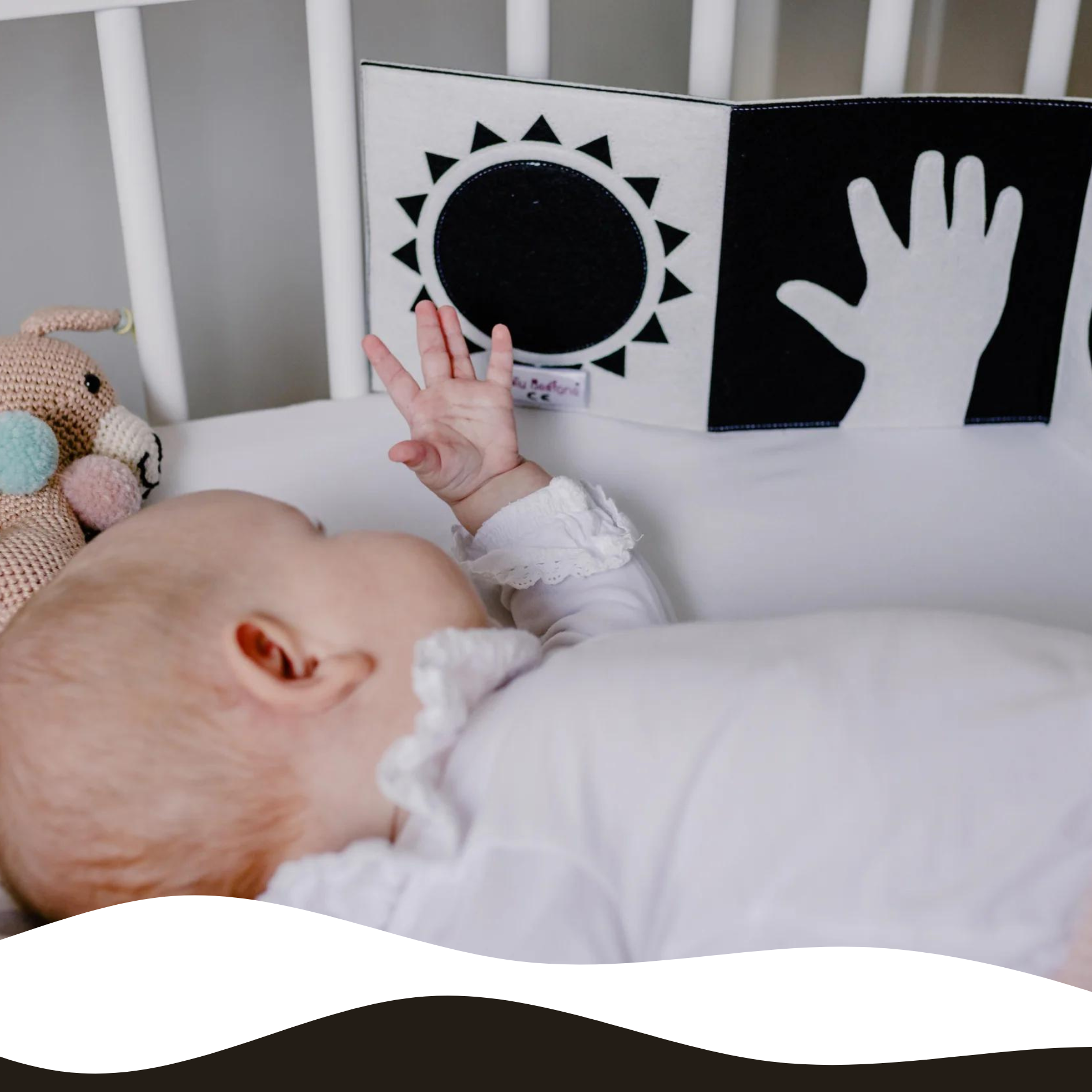Tummy time is one of the earliest exercises in a baby's life and is equally important for its development. Tummy time, also known as "tummy time" or "face-down play," involves placing your baby in a tummy position. This means that he will lie on his stomach while you watch him. In this article, you'll learn what tummy time is, why it's important, the many benefits it offers, what caregivers should pay attention to, and how you can support your baby during this time.

Tummy time is exactly what it sounds like - it's the time your baby spends lying on their stomach. New parents are often advised by their friends and older people to let their baby lie on their stomach once they are just a few days old (American Academy of Pediatrics [AAP], 2021).
You are absolutely right because tummy time is very important for your baby's growth and development. And here are more reasons why you should listen to their advice:
- It strengthens your baby's muscles. While lying on their tummy, babies have to make an effort to lift their head and look around. This helps them develop head control and learn to sit and eventually crawl (Rachwani et al., 2015). When babies are small, their necks are not yet strong enough to balance their heads. Over time, they need to develop this strength in their neck, back and shoulder muscles to be able to sit and eventually crawl - and tummy time is the practice for your baby to do this.
- It prevents your baby from getting flat head syndrome. Abdominal exercises are important to prevent positional plagiocephaly (Laughlin et al., 2011). Positional plagiocephaly or deformed plagiocephaly is a condition in which the baby's head is flattened from the side or back. This can happen when babies lie on their backs or turn their heads too much to one side. Prone positioning is an important exercise to prevent this syndrome, in addition to changing the lying direction, changing the head position, using the correct support for the baby's posture, etc.
- It promotes your baby's motor development. Tummy time promotes the achievement of important milestones in your baby's development (Salls et al., 2009). It encourages your baby to push themselves up with their arms and eventually learn to roll over, sit and crawl. Reaching these milestones takes a few weeks to months; therefore, patience and consistency in practice can go a long way. It also promotes sensory and cognitive development
- It also promotes sensory and cognitive development. Tummy time promotes sensory development and allows babies to reach for objects in their environment (Gibson, 2005). During tummy time, babies can touch and feel different textures and notice sensations in different parts of their body. They also see the world from a different perspective, providing the visual stimulation they need to develop their vision.
- It can help your baby with digestion. The pronation position can help reduce bloating and relieve discomfort after feeding or breastfeeding (Vandenplas et al., 2009). It allows you to feel gentle pressure on your stomach. However, it is important that you consider the severity of the discomfort before placing the child in the prone position . If they are visibly uncomfortable and crying, this position should be avoided.
- It helps them with social. Prone positioning supports language development as babies interact with their environment and caregivers (Tamis-LeMonda et al., 2001). During this activity, your face can be at eye level with the baby so that he or she can mirror your expression, hear you, and form an emotional bond with you. Touching your baby gently will give him a feeling of warmth and security. If you talk to your baby during this time and give him e.g. B. Describing the environment also promotes his language development.

Even though tummy time is very beneficial, it is advisable to keep a few things in mind to ensure that it is a safe and positive experience for your baby.
- The prone position should be supervised. Tummy time should always take place under supervision (AAP, 2021). Small babies can feel uncomfortable after just a few minutes lying on their stomach. Some active babies may also roll over, which can be a bit unsteady for them. Therefore, a parent or responsible caregiver must always be nearby to ensure that the baby is comfortable playing face down.
- Pay attention to the timing. Start tummy time with short sessions. For 0 to 10 week old babies, 5 to 10 minutes of this activity 2-3 times a day is enough (American Academy of Pediatrics [AAP], 2021). As they get older and stronger, you can gradually increase the duration (Zachry & Kitzmann, 2011).
- Another point to pay special attention to is to avoid placing them on their stomachs just before feeding or when they are likely to be preoccupied with a natural basic need such as hunger or sleep (Pin, Eldridge, & Galea, 2007). The child's well-being should come first so that the experience is pleasant and beneficial (AAP, 2021).
- Use a suitable surface. When lying on your stomach, use a firm, flat surface, e.g. B. a play mat to avoid the risk of suffocation or sudden infant death syndrome (SIDS) (Moon & AAP TASK FORCE ON SUDDEN INFANT DEATH SYNDROME, 2016). There are many reasons why experts always recommend not to bed babies on really fluffy surfaces in the first few months of life (Task Force on Sudden Infant Death Syndrome, 2011), but that's a topic for another blog! (Maybe this will be our next blog? Stay tuned!)
Be active with your baby
Make tummy time fun for your baby and for you. Use high-contrast black and white images for your baby's visual development (Wu & Gopnik, 2013). The contrasting color edition from Jolly Designs and the contrasting black and white booklet are ideal toys for this time. If you'd like to learn more about the many ways our Quiet Books can support your baby's cognitive development, read this blog . Place toys, mirrors or colorful objects within baby's reach (ideally 25-30cm from baby's face) to encourage him to lift his head and explore. (Ferber et al., 2005)
Alternatives to lying on your stomach
Sometimes babies resist lying on their stomach, and that's normal. In such cases, pay attention to digestive problems. If your baby resists tummy time, you can use your chest or lap as an alternative support (AAP, 2021). This can be a comfortable and bonding experience for both you and your baby.
We hope you find this blog useful. If you have any questions, feel free to let us know in the comments below! If there are any topics you'd like to learn more about, let us know! We wish you a nice tummy time with your little sunshine!
_____________



Leave a comment
All comments are moderated before being published.
This site is protected by hCaptcha and the hCaptcha Privacy Policy and Terms of Service apply.